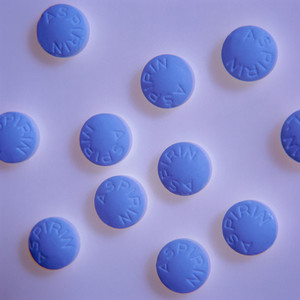Generics makers have a whole host of new bioequivalence documents to go through. The US Food and Drug Administration (FDA) announced on 27 January 2016 that it had released 35 new draft guidance documents and 12 revisions to guidance documents on bioequivalence requirements for the development of generics containing 42 different active ingredients.
The new draft bioequivalence guidance documents cover generics of oral contraceptive ethinyl estradiol/norethindrone acetate, antipsychotic Zyprexa (olanzapine), corticosteroid drug prednisone and acid relux treatment Zantac (ranitidine), among others, see Table 1.
Revised bioequivalence guidance documents include those for generics of menopause hot flashes treatment drospirenone/estradiol, attention deficit hyperactivity disorder (ADHD) treatment Estulic/Tenex (guanfacine) and Alzheimer’s/Parkinson’s Disease treatment Exelon (rivastigmine), see Table 2.
Table 1: FDA new draft bioequivalence guidance documents
| Active ingredient
|
Route of administration
|
Dosage form
|
Link
|
| Alprostadil
|
Urethral
|
Supository
|
Click here
|
| Atazanavir sulfate/cobicistat
|
Oral
|
Tablet
|
Click here
|
| Beclomethasone dipropionate
|
Inhalation
|
Metered aerosol
|
Click here
|
| Betamethasone dipropionate
|
Topical
|
Lotion (augmented)
|
Click here
|
| Betamethasone valerate
|
Topical
|
Lotion
|
Click here
|
| Betaxolol HCI
|
Ophthalmic
|
Suspension/drops
|
Click here
|
| Ciclesonide
|
Inhalation
|
Metered aerosol
|
Click here
|
| Clobetasol propionate
|
Topical
|
Ointment
|
Click here
|
| Desonide
|
Topical
|
Cream
|
Click here
|
| Desonide
|
Topical
|
Lotion
|
Click here
|
| Diflorasone diacetate (Orange book 075508)
|
Topical
|
Cream
|
Click here
|
| Diflorasone diacetate (Orange book 076263)
|
Topical
|
Cream
|
Click here
|
| Difluprednate
|
Ophthalmic
|
Emulsion
|
Click here
|
| Elvitegravir
|
Oral
|
Tablet
|
Click here
|
| Erythromycin
|
Oral
|
Tablet
|
Click here
|
| Ethinyl estradiol/norethindrone acetate
|
Oral
|
Tablet
|
Click here
|
| Flurandrenolide
|
Topical
|
Lotion
|
Click here
|
| Formoterol fumarate/mometasone furoate
|
Inhalation
|
Metered aerosol
|
Click here
|
| Ingenol mebutate
|
Topical
|
Gel (0.05%)
|
Click here
|
| Ingenol mebutate
|
Topical
|
Gel (0.015%)
|
Click here
|
| Mercaptopurine
|
Oral
|
Suspension
|
Click here
|
| Methylphenidate HCl
|
Oral
|
ER Capsule
|
Click here
|
| Metronidazole
|
Oral
|
Capsule
|
Click here
|
| Mometasone furoate
|
Topical
|
Ointment
|
Click here
|
| Naftifine HCl
|
Topical
|
Cream
|
Click here
|
| Naftifine HCl
|
Topical
|
Gel
|
Click here
|
| Nicotine
|
Nasal
|
Metered spray
|
Click here
|
| Olanzapine pamoate
|
Intramuscular
|
ER suspension
|
Click here
|
| Omega-3 carboxylic acids
|
Oral
|
Capsule
|
Click here
|
| Prednisone
|
Oral
|
Tablet
|
Click here
|
| Ranitidine HCl
|
Oral
|
Capsule
|
Click here
|
| Riociguat
|
Oral
|
Tablet
|
Click here
|
| Spinosad
|
Topical
|
Suspension
|
Click here
|
| Trametinib dimethyl sulfoxide
|
Oral
|
Tablet
|
Click here
|
| Vorapaxar sulfate
|
Oral
|
Tablet
|
Click here
|
| ER: extended release; HCI: hydrochloride.
|
Table 2: FDA revised draft bioequivalence guidance documents
| Active ingredient
|
Route of administration
|
Dosage form
|
Link
|
| Abiraterone acetate
|
Oral
|
Tablet
|
Click here
|
| Amphotericin B
|
Injection
|
Liposome
|
Click here
|
| Ciprofloxacin HCl/hydrocortisone
|
Otic
|
Suspension/drops
|
Click here
|
| Colesevelam HCl
|
Oral
|
Powder, suspension
|
Click here
|
| Drospirenone/estradiol
|
Oral
|
Tablet
|
Click here
|
| Guanfacine HCl
|
Oral
|
ER tablet
|
Click here
|
| Lamotrigine
|
Oral
|
ER tablet
|
Click here
|
| Lidocaine
|
Topical
|
Patch
|
Click here
|
| Lomitapide mesylate
|
Oral
|
Capsule
|
Click here
|
| Methylphenidate HCl
|
Oral
|
ER capsule
|
Click here
|
| Phytonadione
|
Oral
|
Tablet
|
Click here
|
| Rivastigmine Tartrate
|
Oral
|
Capsule
|
Click here
|
| ER: extended release; HCI: hydrochloride.
|
The draft guidance documents recommend what in vivo and in vitro studies generics companies should carry out in order to demonstrate bioequivalence. The number of studies, the population to be studied, blood sampling time points and analytes to be measured in blood samples are also detailed in the draft guidance documents.
In total, FDA now has 1,397 product-specific guidelines with bioequivalence study recommendations. The agency also has an overarching guidance document on bioequivalence recommendations for specific products [1].
Comments on the draft guidance documents can be posted to the Division of Dockets Management (DDM) under Docket FDA-2007-D-0369-0015. This can be done via the website www.regulations.gov or written comments can be mailed to DDM (HFA-305), FDA, 5630 Fishers Lane, Rm. 1061, Rockville, MD 20852.
Related article
Doctors in the US should remember to prescribe generics
Reference
1. GaBI Online - Generics and Biosimilars Initiative. US guidelines for generics [www.gabionline.net]. Mol, Belgium: Pro Pharma Communications International; [cited 2016 Feb 19]. Available from: www.gabionline.net/Guidelines/US-guidelines-for-generics
Permission granted to reproduce for personal and non-commercial use only. All other reproduction, copy or reprinting of all or part of any ‘Content’ found on this website is strictly prohibited without the prior consent of the publisher. Contact the publisher to obtain permission before redistributing.
Copyright – Unless otherwise stated all contents of this website are © 2016 Pro Pharma Communications International. All Rights Reserved.








 0
0











Post your comment